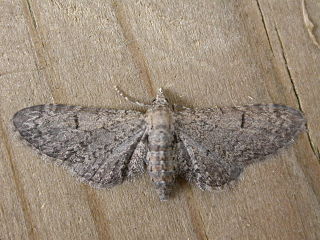
Lebanon, officially the Republic of Lebanon or the Lebanese Republic, is a country in Western Asia. It is located between Syria to the north and east and Israel to the south, while Cyprus lies to its west across the Mediterranean Sea; its location at the crossroads of the Mediterranean Basin and the Arabian hinterland has contributed to its rich history and shaped a cultural identity of religious diversity. It is part of the Levant region of the Middle East. Lebanon is home to roughly five million people and covers an area of 10,452 square kilometres (4,036 sq mi), making it the second smallest country in continental Asia. The official language of the state is Arabic, while French is also formally recognized; Lebanese Arabic is used alongside Modern Standard Arabic throughout the country.

Sumac, also spelled sumach, is any of about 35 species of flowering plants in the genus Rhus and related genera in the cashew family (Anacardiaceae). Sumacs grow in subtropical and temperate regions throughout the world, including East Asia, Africa, and North America. Sumac is used as a spice, as a dye, and in medicine.

The genus Tamarix is composed of about 50–60 species of flowering plants in the family Tamaricaceae, native to drier areas of Eurasia and Africa. The generic name originated in Latin and may refer to the Tamaris River in Hispania Tarraconensis (Spain).

Galium verum is a herbaceous perennial plant of the family Rubiaceae. It is widespread across most of Europe, North Africa, and temperate Asia from Israel, Lebanon and Turkey to Japan and Kamchatka. It is naturalized in Tasmania, New Zealand, Canada, and the northern half of the United States. It is considered a noxious weed in some places.

Tamarix aphylla is the largest known species of Tamarix, with heights up to 18 metres (59 ft). The species has a variety of common names, including Athel tamarisk, Athel tree, and Athel pine. It is an evergreen tree, native across North, East, and Central Africa, through the Middle East, and into parts of Western and Southern Asia.
Udim is a moshav in central Israel. Located near Netanya, it falls under the jurisdiction of Hof HaSharon Regional Council. In 2021 it had a population of 1,405.

Eupithecia ultimaria, the Channel Islands pug, is a moth of the family Geometridae. The species was first described by Jean Baptiste Boisduval in 1840. It can be found in Europe, where it is found in Portugal and Spain, coastal western and southern France, Italy, the Mediterranean islands including Cyprus and Greece. It is also found in southern England and the Channel Islands. Furthermore, it is present in North Africa, Lebanon, Israel, Iraq and Iran.

Tamarix ramosissima, commonly known as saltcedarsalt cedar, or tamarisk, is a deciduous arching shrub with reddish stems, feathery, pale green foliage, and characteristic small pink flowers.
Clytie haifae is a moth of the family Erebidae first described by O. Habich in 1905. It is found along the coast of Algeria, Morocco, Sudan, Egypt, Lebanon and Israel.
Clytie syriaca is a moth of the family Erebidae first described by Charles-Juste Bugnion in 1837. It is found along the coastal regions of the Mediterranean Basin, from the Balkans to Turkey, Lebanon, Syria and Israel.
Dysgonia rogenhoferi is a moth of the family Noctuidae first described by Otto Bohatsch in 1880. It is found in Lebanon, Israel, Iraq, Arabia, Turkmenistan, northern Iran, Uzbekistan, the European part of southern Russia, Azerbaijan and Pakistan.

Nahal Tavor, lit.Tabor Stream, is an intermittent stream in the Lower Galilee, Israel.

Tamarix chinensis is a species of tamarisk known by the common names five-stamen tamarisk and Chinese tamarisk or saltcedar. It is native to China and Korea, and it is known in many other parts of the world as an introduced species and sometimes an invasive noxious weed. It easily inhabits moist habitat with saline soils. It may grow as a tree with a single trunk or as a shrub with several spreading erect branches reaching 6 metres or more in maximum height. It has been known to reach 12 metres. It has reddish, brown, or black bark. The small, multibranched twigs are covered in small lance-shaped, scale-like leaves which are no more than about 3 mm long. The inflorescence is a dense raceme of flowers a few cm long. Each fragrant flower has five petals which are usually pink but range from white to red.
Agdistis tamaricis is a moth of the family Pterophoridae found in Africa, Asia and Europe. It was first described by the German entomologist, Philipp Christoph Zeller in 1847.

Alcea setosa, the bristly hollyhock, is an ornamental plant in the family Malvaceae.

The Iran–Israel proxy conflict, also known as the Iran–Israel proxy war or Iran–Israel Cold War, is an ongoing proxy war between Iran and Israel. The conflict involves threats and hostility by Iran's leaders against Israel, and their declared objective to dissolve the Jewish state on the basis of, or not on the basis of anti-semitic rhetoric and reasoning.

Tamarix nilotica, the Nile tamarisk is a species of shrub or small tree in the tamarisk family. It is found in arid parts of North Africa and the Middle East, particularly areas with high salinity. It forms part of the dune stabilisation process.

Colchicum stevenii, or Steven's meadow saffron, is a species of flowering plant in the family Colchicaceae. Hebrew: סתוונית היורה, Arabic: سَراجُ الغولة, سُورَنْجان












